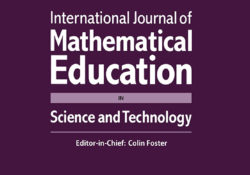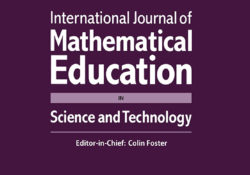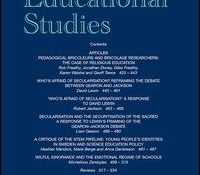tandfonline.com har udgivet en rapport under søgningen „Teacher Education Mathematics‟: Abstract The 75th anniversary of the founding of the Financial Analysts Journal offers a rare vista of the evolutionary path of financial analysis and its practitioners. That path is by no means random but is shaped by a complex ecosystem in which technological innovation interacts with shifting business conditions and a growing population of financial stakeholders. Using the lens of the Adaptive Markets Hypothesis—the principles of evolutionary biology and ecology applied to the financial system—we can clearly identify eight discrete financial “eras” in which unique combinations of economic need and technological advances gave rise to new products, services, and financial institutions. By understanding the underlying drivers and resulting dynamics of these eras, we can begin to develop a deeper appreciation… Continue Reading →
Like this:
Like Loading...
tandfonline.com har udgivet en rapport under søgningen „Teacher Education Mathematics‟: ABSTRACT ABSTRACT Integration of technology in schools rests on effective teacher education programmes that help teachers create new teaching and learning methods and adopt them for classroom use. Social learning processes play a key role in this, but there is a lack of understanding of their role in technology adoption and in evidencing them in teacher education programmes. Using the knowledge appropriation model, we propose a self-report questionnaire instrument to evidence knowledge creation and learning practices during training. With a sample of N = 109 in-service teachers participating in the Teacher Innovation Laboratory, a teacher professional development programme that is built around school−university co-creation partnerships, we demonstrate the instrument to be reliable and to differentiate between groups who completed different programmes.… Continue Reading →
Like this:
Like Loading...
eric.ed.gov har udgivet: This hearing discussed how lack of coordination between laboratory exercises and classroom lectures, inadequately trained teachers, languishing facilities, and current high school organization diminish the value these exercises can have or prohibit them all together, and highlighted how a strong hands-on experience can create scientifically literate students, interested in pursuing a career in science. Statement presenters include: Representative Brian Baird, Chairman, Subcommittee on Research and Science Education, Committee on Science and Technology, U.S. House of Representatives; Representative Vernon J. Ehlers, Ranking Minority Member, Subcommittee on Research and Science Education, Committee on Science and Technology, U.S. House of Representatives; Honorable Ruben Hinojosa, Congressional Representative from Texas; Dr. Arthur Eisenkraft, Distinguished Professor of Science Education; Director, Center of Science and Math in Context (COSMIC), University of Massachusetts, Boston; Linda… Continue Reading →
Like this:
Like Loading...
eric.ed.gov har udgivet: These hearings focused on topics and issues related to the status, quality, and improvement of K-12 science and mathematics in the Pittsburgh area. Science and mathematics teachers, school administrators, school board members, industry leaders, and college officials provided a firsthand description of the nature and direction of science and mathematics curricula as well as their perceptions of what improvements could be made in these areas. These individuals are Delores Augustine, Don McBride, William Merryman, Wayne Mikach, Albert Caretto, Jane Konrad, John DeBlasio, George Murphy, Allen Blacka, Paul LeMahieu, Shirley Joyner, and Hugh Lang. David Bergholz, James Colker, Milton Gottleib, Dan Swickline, Julius Brown, and John Sabol provided input from the perspectives of local industry and the Allegheny County Community college on what technical skills are presently needed… Continue Reading →
Like this:
Like Loading...
tandfonline.com har udgivet en rapport under søgningen „Teacher Education Mathematics‟: Abstract The purpose of this study was to examine the current state of integrated science, technology, engineering, arts, and mathematics (STEAM) education. We conducted an extensive review of the literature, followed by document analysis to construct concepts and themes associated with prospects, priorities, processes, and problems of STEAM education. The analysis of STEAM learning concepts from the literature provided three sub-constructs under the prospects – STEAM movement, the purpose of STEAM education, and benefits of STEAM education. The sub-constructs under priorities of STEAM education were – curriculum integration in STEAM and STEAM education as a curriculum reform. The sub-constructs of STEAM education as a process were – the pedagogical process and assessment in STEAM education. The sub-constructs of the problems in… Continue Reading →
Like this:
Like Loading...
tandfonline.com har udgivet en rapport under søgningen „Teacher Education Mathematics‟: Abstract Formulae display:?Mathematical formulae have been encoded as MathML and are displayed in this HTML version using MathJax in order to improve their display. Uncheck the box to turn MathJax off. This feature requires Javascript. Click on a formula to zoom. This paper presents a case study of two sixth-grade students’ use of an iPad as an instructional tool for mathematics. Based on their written and oral responses, we investigated and analyzed their meaning making process with mathematical content in a classroom where the iPad was a central tool for teaching practices. The analyses were based on Steinbring’s [(2005). The construction of new mathematical knowledge in classroom interaction: An epistemological perspective (Vol. 38). Springer] framework, which we applied to understand… Continue Reading →
Like this:
Like Loading...
eric.ed.gov har udgivet: Interviews with 28 faculty and administrators in 3 technology teacher education programs found that organizational structure and course configuration influenced faculty and administrator interaction in terms of common educational philosophy, the nature of leadership, influence of institutional goals, effect of accrediting agencies, math/science requirements, and recruitment and retention. (SK) Link til kilde
Like this:
Like Loading...
tandfonline.com har udgivet en rapport under søgningen „Teacher Education Mathematics‟: ABSTRACT ABSTRACT The phenomenon of digital differentiation, or stark variations in ability to access Internet hardware and/or infrastructure, has been a feature of provision since its early days. This article explores the impact of digital differentiation on two groups of young people, in England and Germany. It is based on fieldwork that took place during the academic year 2018-2019, just before the global pandemic threw the issue of equality of Internet access into sharp relief. The article begins by describing the empirical design of the My Life Online project, including background, sampling, instruments, ethical aspects and the initial data analysis approach taken to ensure reliability and validity. It then develops a further analysis drawing on Halford and Savage’s hybrid Bourdieu/Actor… Continue Reading →
Like this:
Like Loading...
eric.ed.gov har udgivet: NASA CONNECT is an annual series of integrated mathematics, science, and technology instructional distance learning programs for students in grades 6-8. This program is designed for students to learn about the evolution of flight. The program has three components–television broadcast, Web activity, and lesson guide–which are designed as an integrated instructional package. Students learn how the Wright Brothers became the first human beings to successfully design, construct, and fly an airplane and which method the Wright Brothers used in designing their airplane. Students also observe NASA engineers and researchers using problem-solving skills to design wings that will change their shape during flight. By conducting hands-on and Web activities, students make connections between NASA research and the mathematics, science, and technology they learn in the classroom. The educator… Continue Reading →
Like this:
Like Loading...
eric.ed.gov har udgivet: This case study of East School, a central Vermont K-2 school with 125 students, describes the early stages of changing instruction and learning in a school with established district-wide standards. Changes in teaching at the local level were led by example, modeled by a dynamic principal as she encouraged the teachers to move towards a more integrated teaching framework. The case study also describes the contributions and struggles of a dedicated volunteer who felt a deep ownership of the project and yet was not allowed to truly work with the team, which brings forth questions around the inner-workings of the team, the role of outside facilitators, and team understanding of project goals and objectives. The findings of this case study lead to the conclusion that the principal’s… Continue Reading →
Like this:
Like Loading...




